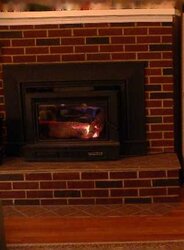My hearth is currently 19:, but when I put in a line, it will be like 16". I have a sweep telling me that my Insurance will not cover me - that I need to tell my insurance I am getting a solid fuel burner. I have the stove saleperson telling me to just get a flame retardant carpet if I am that worried. I want to do the right thing. What should I do? Build out my hearth?
Thank you!
- Stowy
Thank you!
- Stowy


